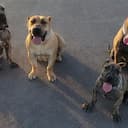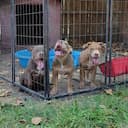Origins and Temperament
Rooted in 19th century Britain, the Bullmastiff was bred as a gamekeeper's guard dog—strong and brave, yet gentle with family. These patient and loyal dogs are known for being calm and affectionate, making them sensitive to the stresses of travel. Due to their protective nature, Bullmastiffs require a travel environment that feels secure and a handler who can offer reassuring, calm guidance.
Size and Physical Needs
A Bullmastiff’s size is undeniably impressive, with adults often weighing between 100 to 130 pounds. Their sizable frame means they need ample space during transport in addition to regular exercise to maintain health. Adaptable to various climates, Bullmastiffs still require a moderate temperature and soft bedding during transport to support their joints and promote comfort.
Common Health Considerations
The breed is predisposed to conditions such as hip dysplasia, elbow dysplasia, and bloat, which should all be considered when arranging their travel. Ensuring your Bullmastiff is current with health check-ups and traveling with all necessary health documentation is key for a safe and hassle-free journey.















